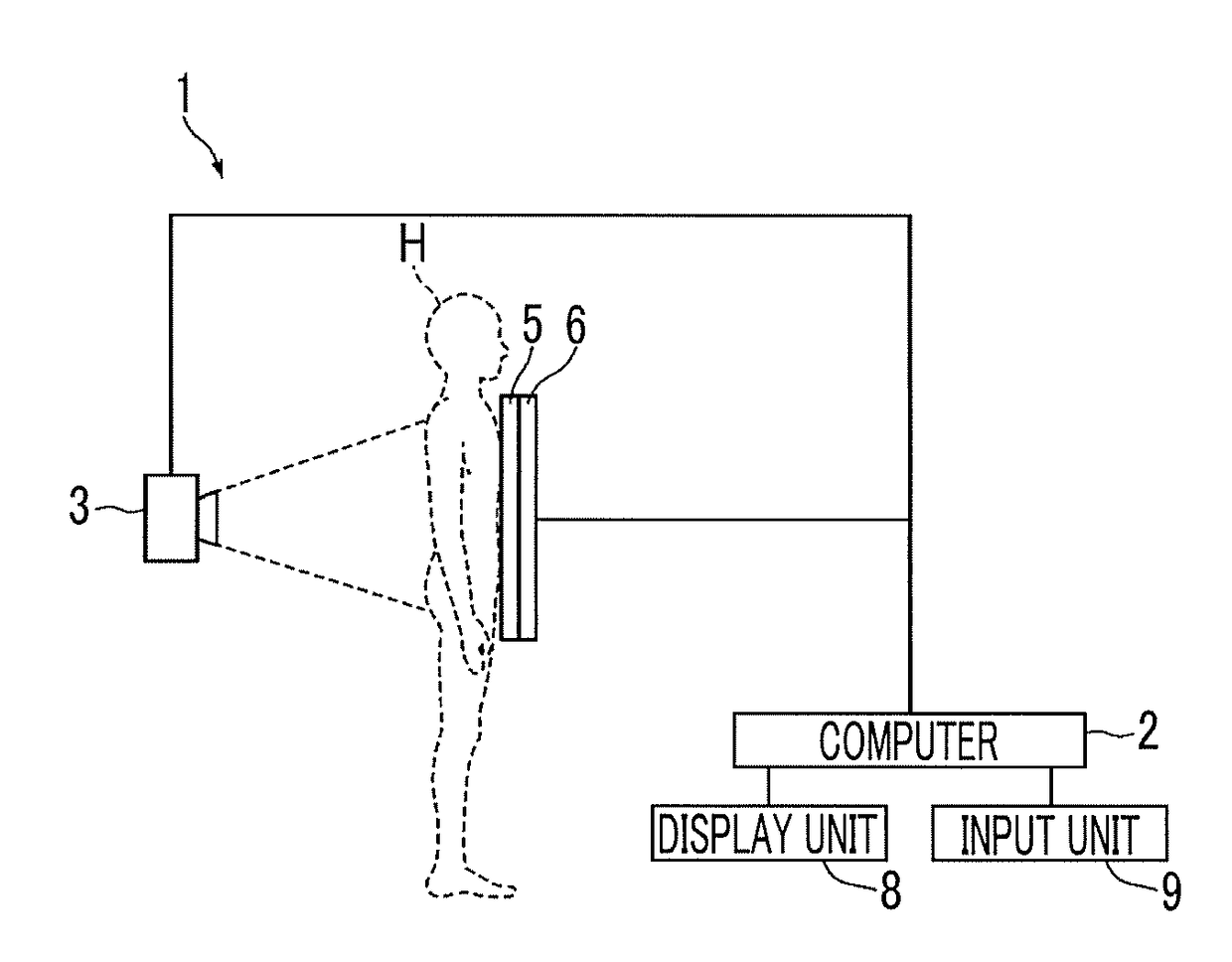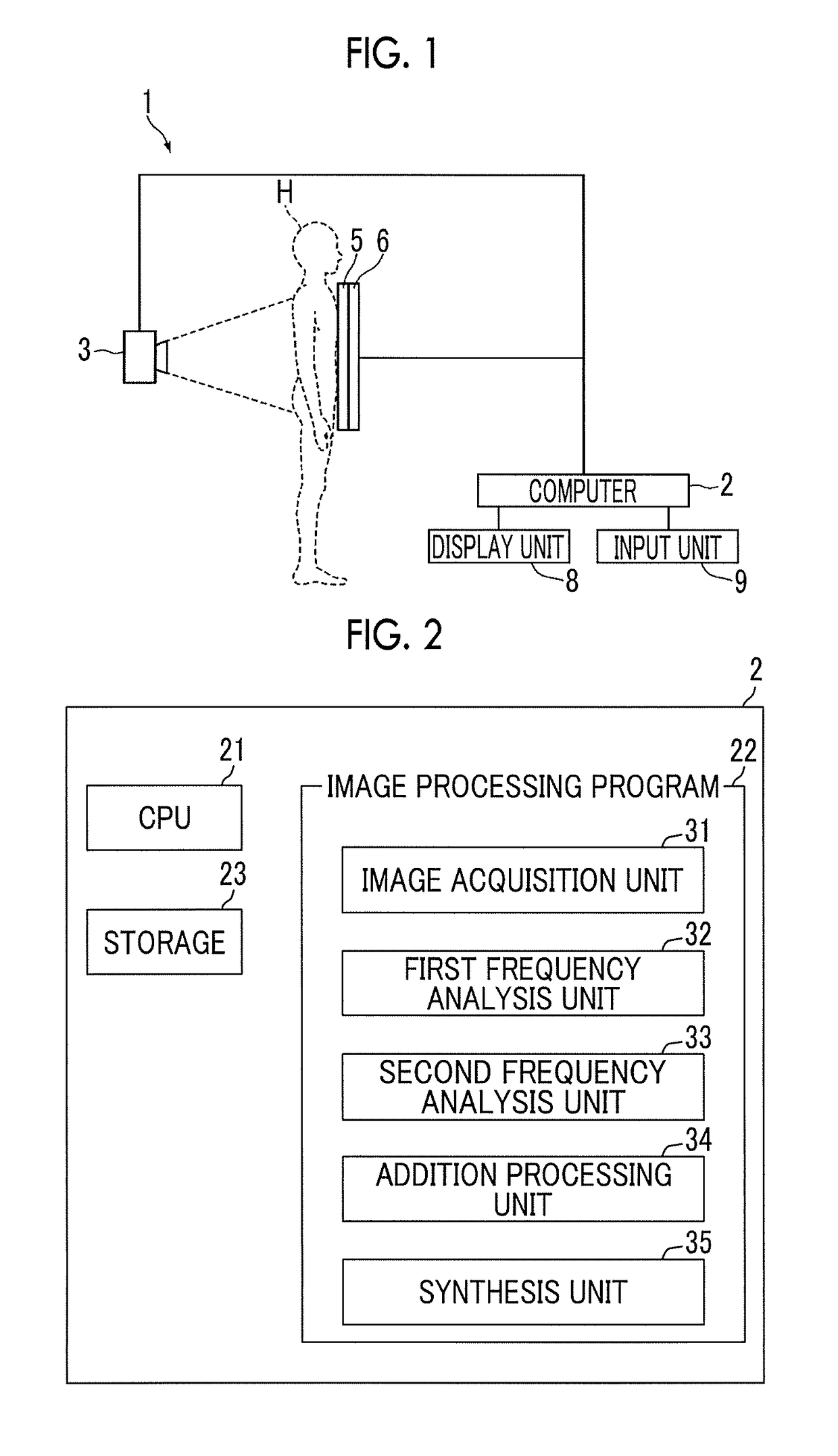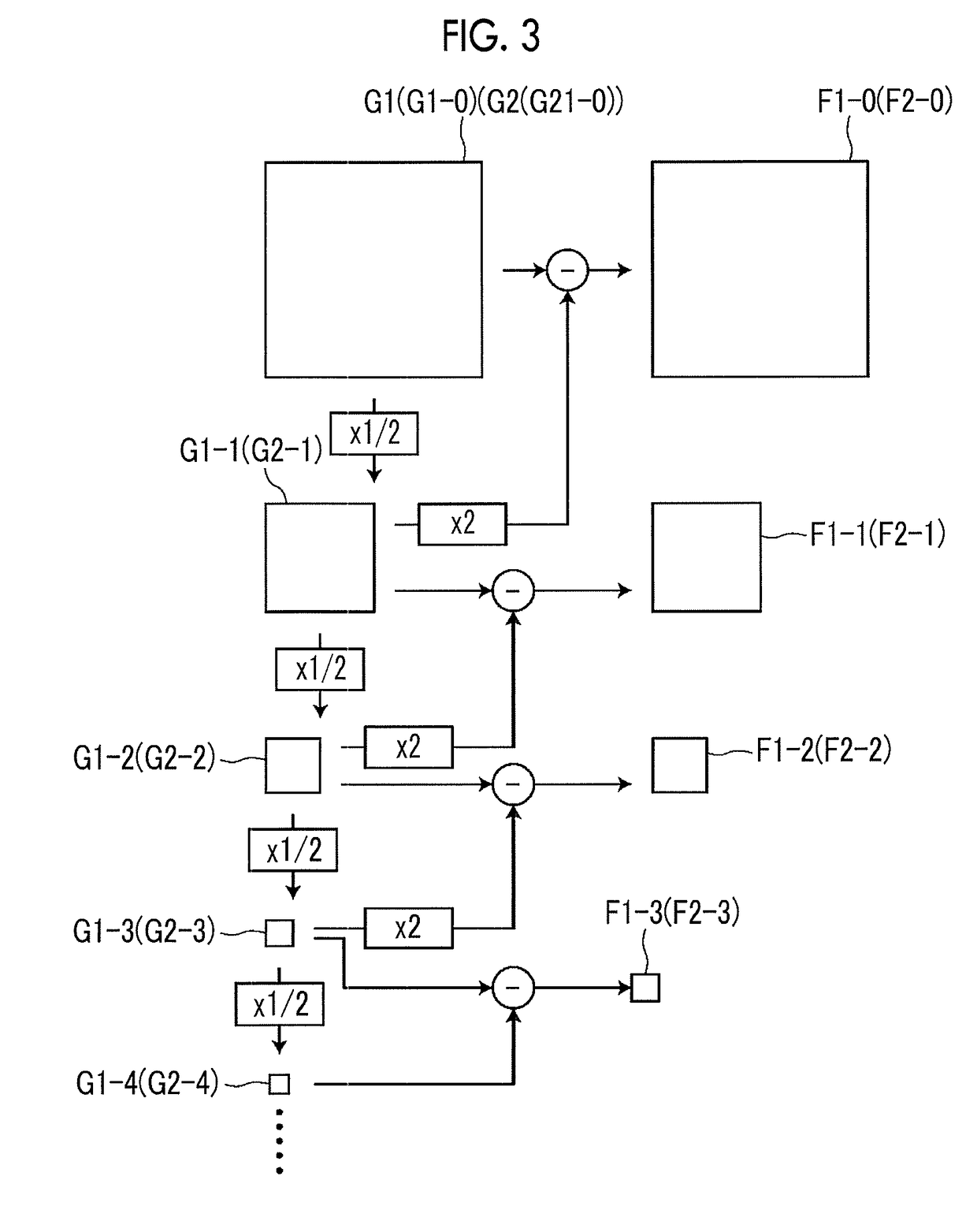Image processing apparatus, image processing method, and image processing program
a technology which is applied in the field of image processing apparatus and image processing method, and image processing program, can solve the problems of black crushing, large noise, and radiation emitted to the detection means that exceeds the maximum detection amount of radiation of the detection means, and achieves the effect of wide observable density rang
- Summary
- Abstract
- Description
- Claims
- Application Information
AI Technical Summary
Benefits of technology
Problems solved by technology
Method used
Image
Examples
Embodiment Construction
[0028]Hereinafter, embodiments of the invention will be described with reference to the accompanying drawings. FIG. 1 is a block diagram showing a schematic configuration of a radiation imaging system to which an image processing apparatus according to an embodiment of the invention is applied. As shown in FIG. 1, the radiation imaging system according to the embodiment captures two radiation images, and performs a weighting addition process using the two radiation images. The radiation imaging system includes an imaging apparatus 1, and a computer 2 that includes the image processing apparatus according to this embodiment.
[0029]The imaging apparatus 1 is an imaging apparatus for performing a so-called one-shot method for irradiating a first radiation detector 5 and a second radiation detector 6 with X-rays emitted from an X-ray source 3 which is a radiation source and passed through a subject H. In imaging, as shown in FIG. 1, the first radiation detector 5 and the second radiation...
PUM
 Login to View More
Login to View More Abstract
Description
Claims
Application Information
 Login to View More
Login to View More - R&D
- Intellectual Property
- Life Sciences
- Materials
- Tech Scout
- Unparalleled Data Quality
- Higher Quality Content
- 60% Fewer Hallucinations
Browse by: Latest US Patents, China's latest patents, Technical Efficacy Thesaurus, Application Domain, Technology Topic, Popular Technical Reports.
© 2025 PatSnap. All rights reserved.Legal|Privacy policy|Modern Slavery Act Transparency Statement|Sitemap|About US| Contact US: help@patsnap.com



